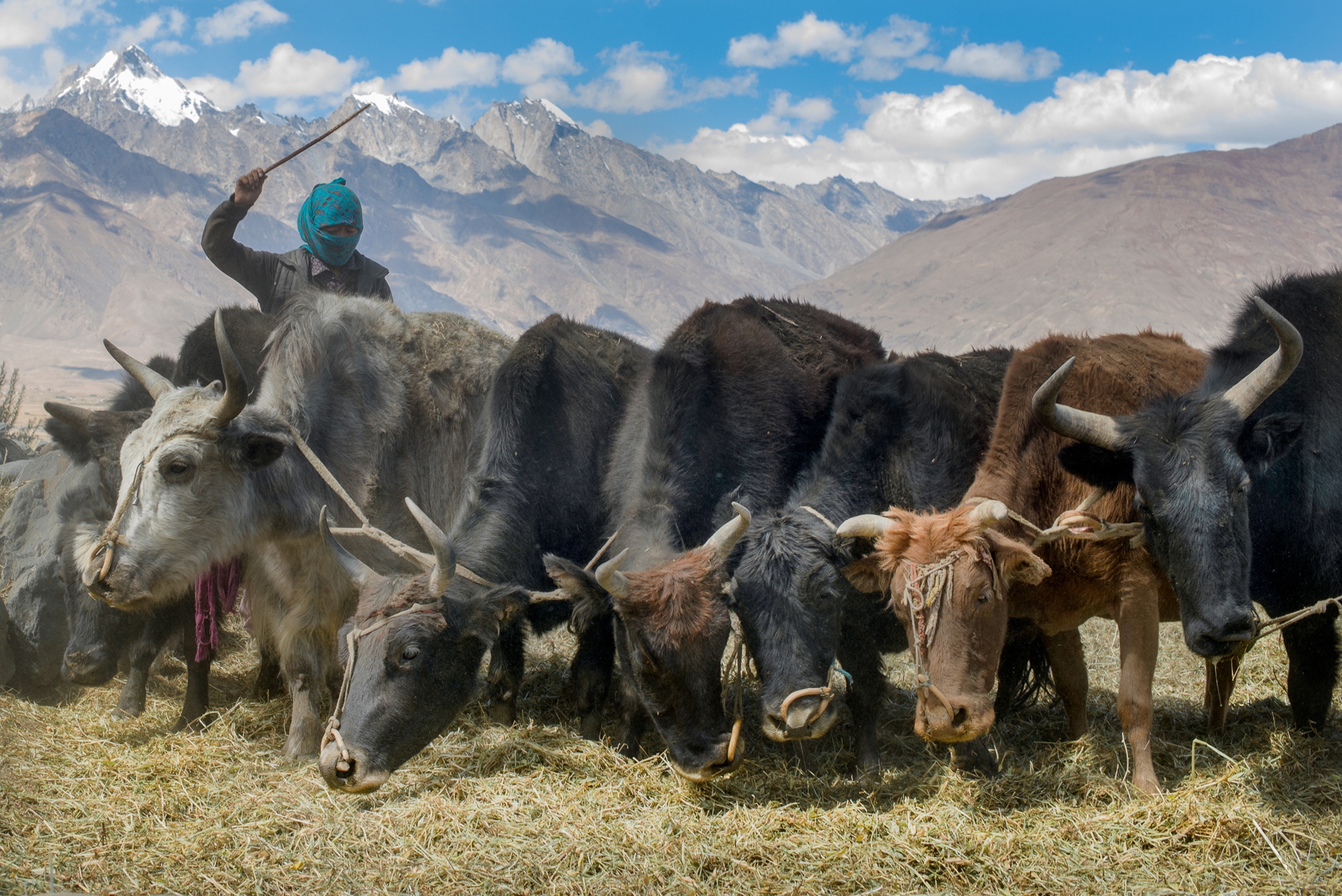
Tenzing Chozom threshes barley at her family farm in the village of Kumik in...
READ ON
Tenzing Chozom threshes barley at her family farm in the village of Kumik in Zanskar, Kashmir. Yaks are made to walk in circles in an area covered with dry harvested grain, which loosens the seeds from the chaff. Due to water scarcity, villagers are unable to maintain a significant headcount of livestock and have to borrow yaks from fellow villagers to plow the fields and thresh the crops.
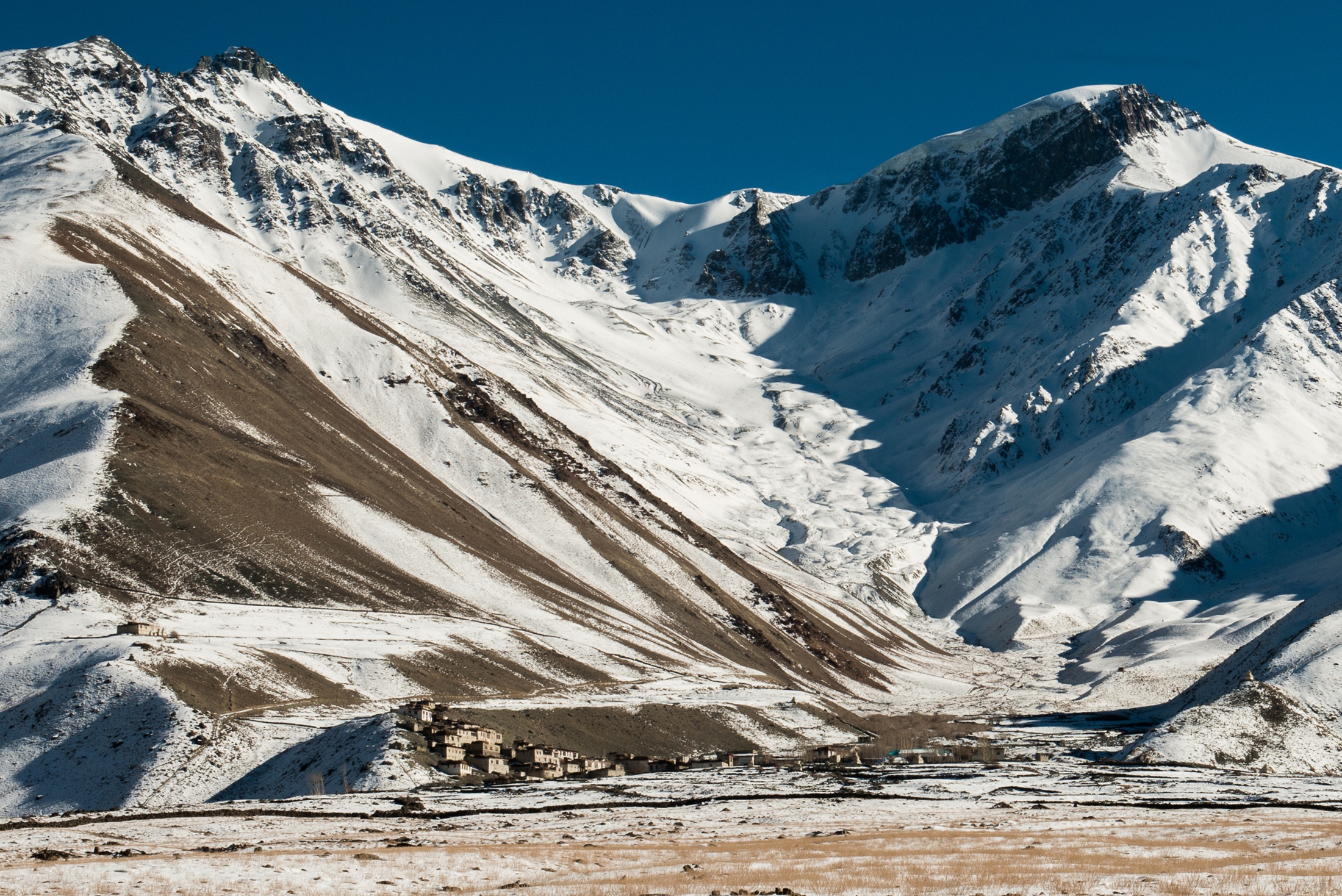
Mountain slopes surrounding Kumik indicate a scant snowfall in the winter of...
READ ON
Mountain slopes surrounding Kumik indicate a scant snowfall in the winter of 2016, resulting in water shortage in the year ahead impacting agriculture and livestock rearing. In Kumik, climate change has significantly impacted the role women have traditionally played in the community. Education and employment opportunities for women are limited because they not only manage traditional household chores but also play a critical role in farming, livestock raising, fuel gathering, and caretaking of their families.
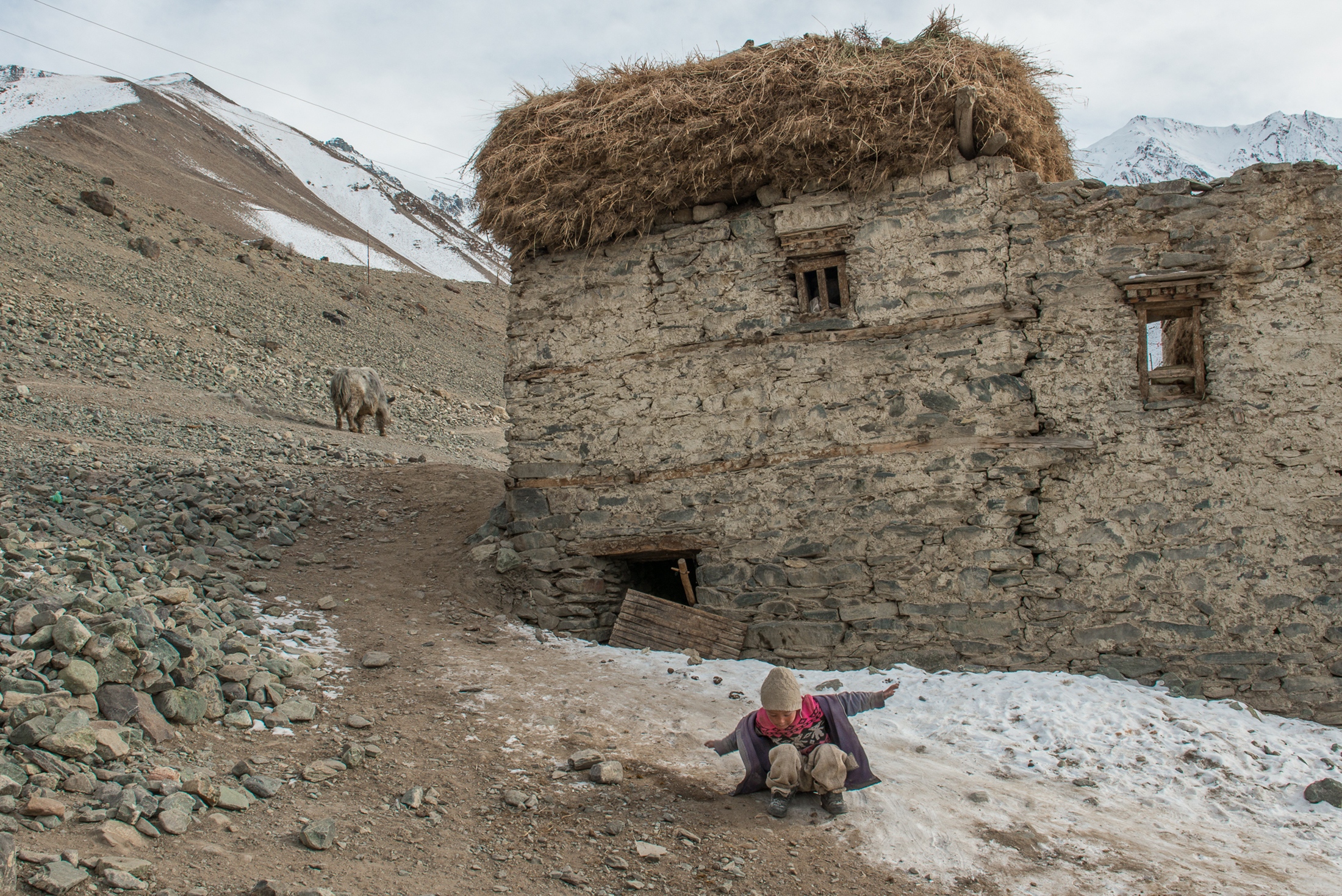
A view of the Kumik Martang village as captured from the Kumik village in...
READ ON
A view of the Kumik Martang village as captured from the Kumik village in Zanskar, Kashmir. Kumik has been facing a water crisis for over a decade due to climate change, forcing villagers to abandon their ancestral village and build a new village named Kumik Martang near the Tsarap River. By 2014, seven of the 35 families relocated to the new village and began farming. But a devastating flood caused by the Tsarap River in spring 2015 destroyed the canals and farmlands in the new village.
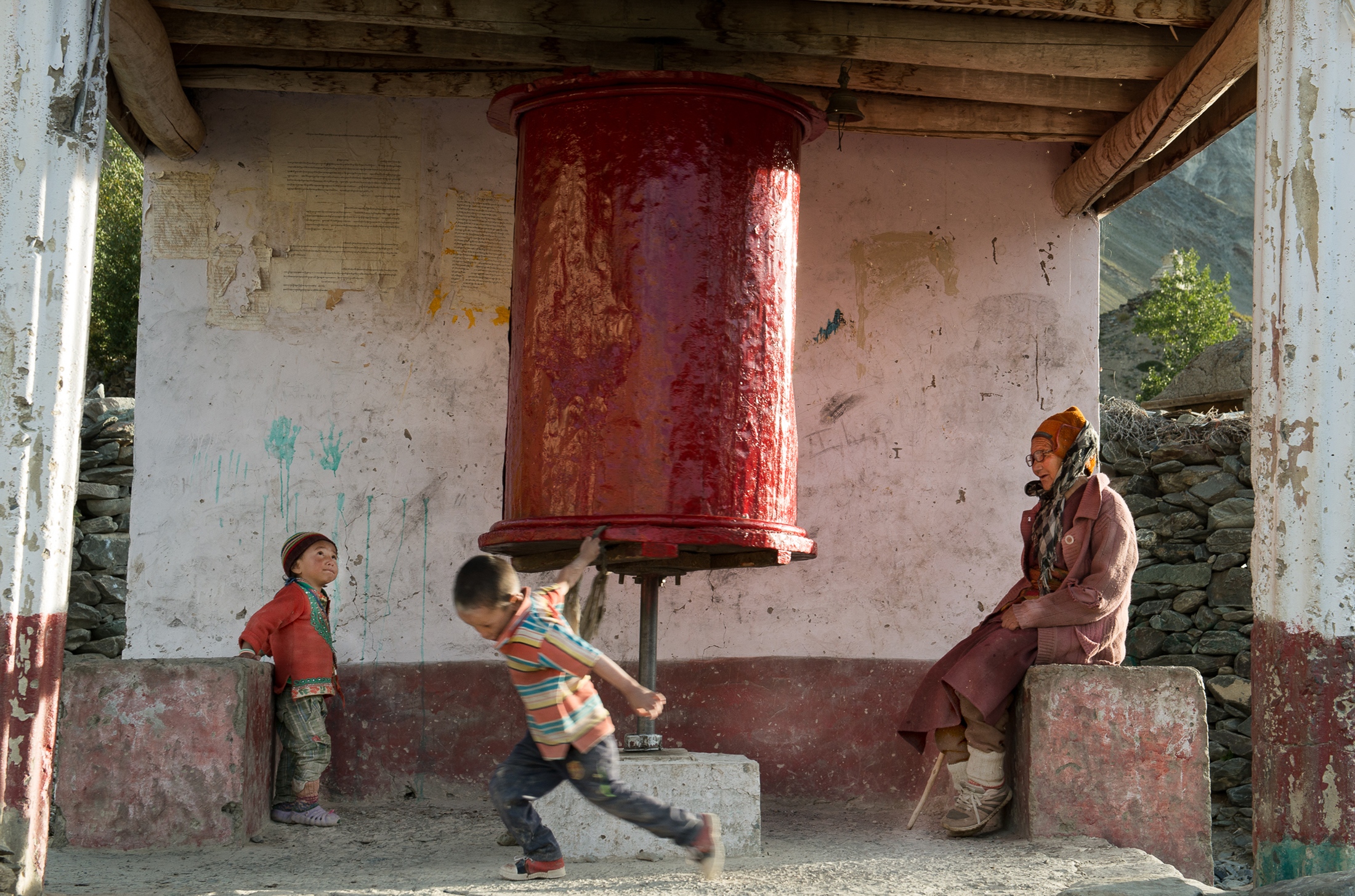
Children in the village of Kumik are seen playing around the village mani, a...
READ ON
Children in the village of Kumik are seen playing around the village mani, a Buddhist prayer wheel, while a village elder looks over them. Climate change can lead to the loss of cultural heritage, which can subsequently weaken social cohesion and make the process of dealing with climate change much more challenging. This is especially relevant for communities that are threatened by climate change and have to consider migrating from their homelands. Climate-induced migration can cause communities to lose their cultural beliefs and values.
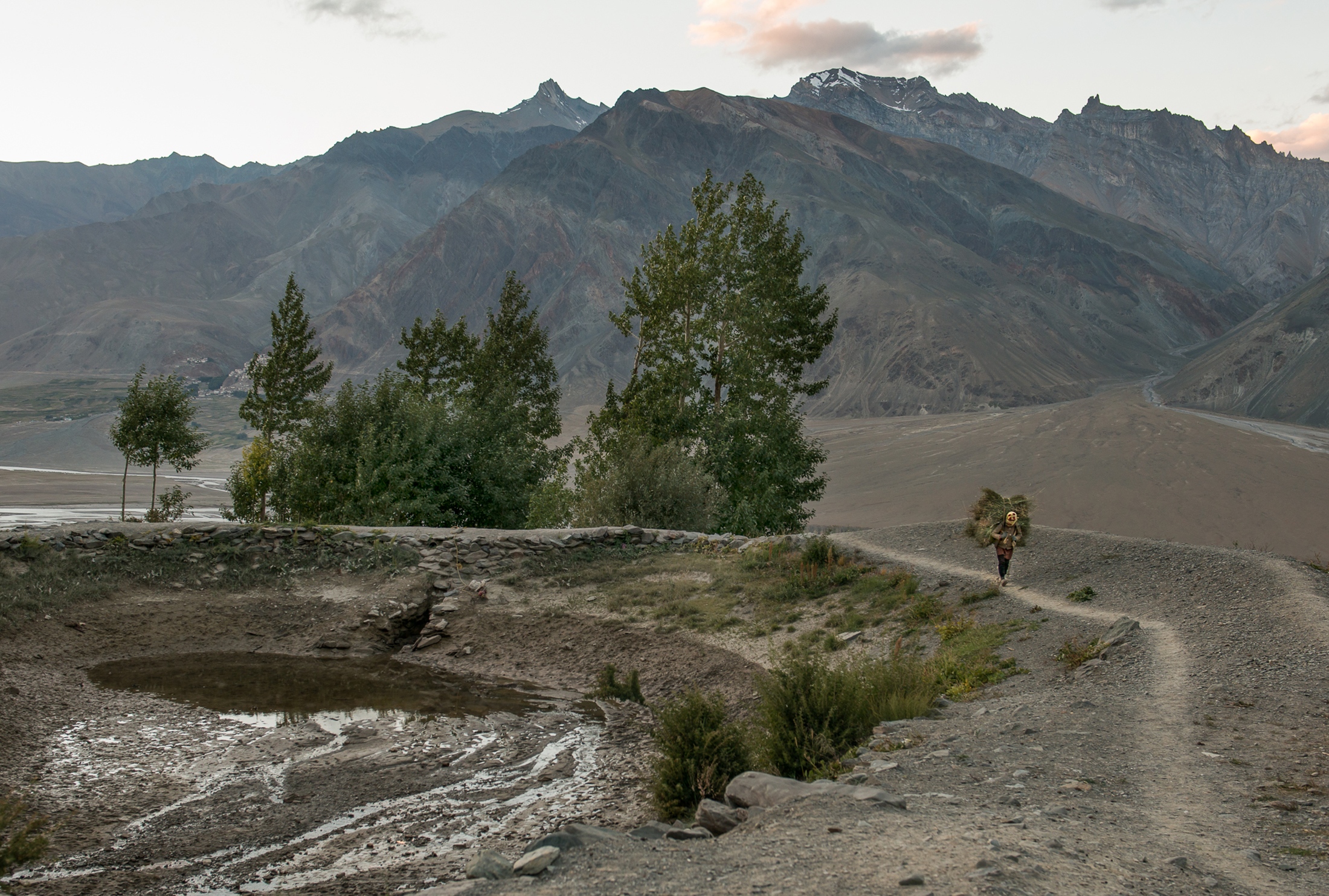
Stanzin Dayskon walks past a nearly dry water storage pond, carrying cut...
READ ON
Stanzin Dayskon walks past a nearly dry water storage pond, carrying cut grass, in the village of Kumik in Zanskar, Kashmir. During spring and summer, villagers ration water from the pond to irrigate farms. In the fall, the snowfields surrounding Kumik disappear, and the Sultan Largo glacier recedes farther due to climate change, turning Kumikthu stream into a trickle of water, drying out the pond.
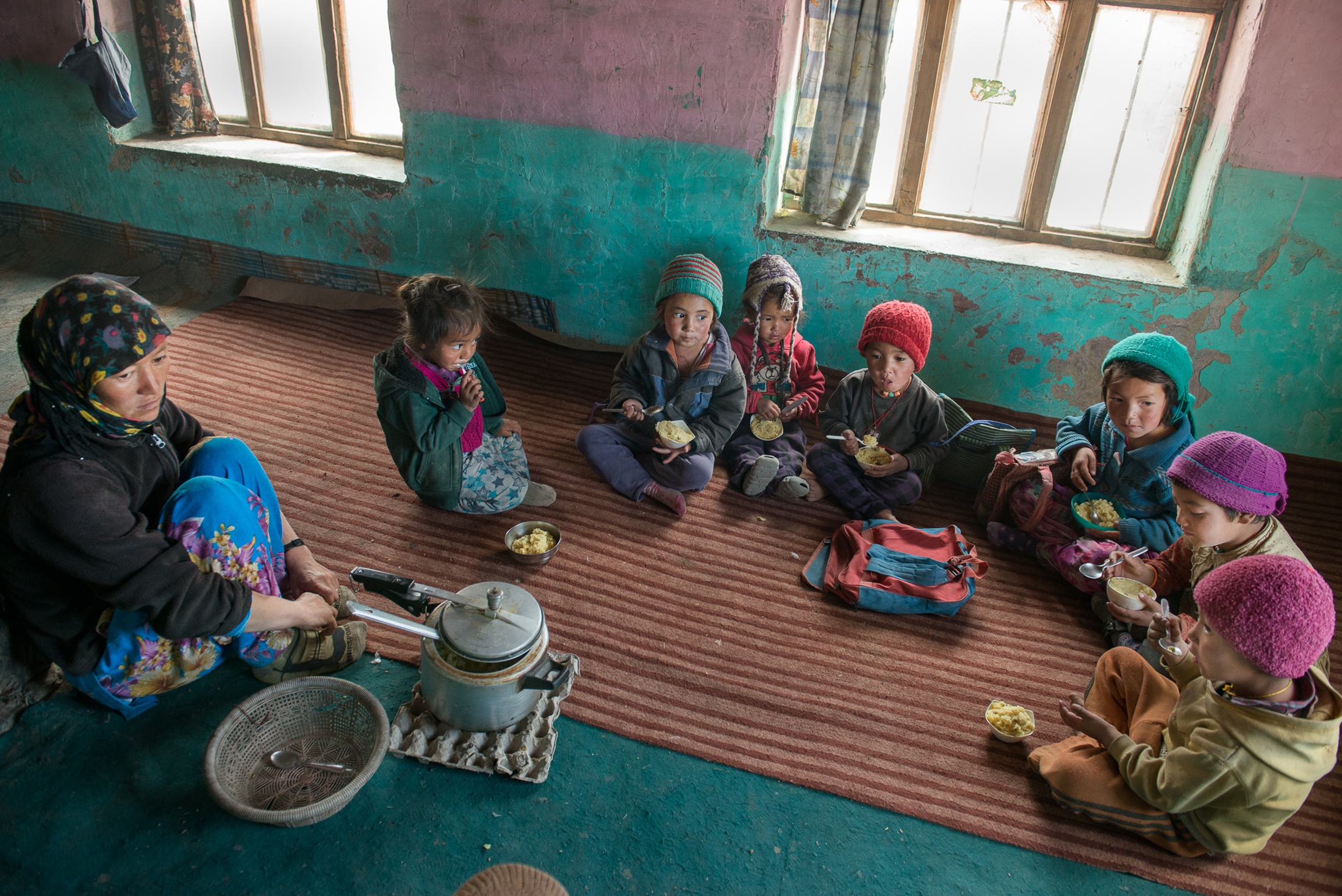
Lobzang Tsamo, 17, (left) serves government sponsored mid-day meal to...
READ ON
Lobzang Tsamo, 17, (left) serves government sponsored mid-day meal to students from Kumik Elementary School. Few females in Kumik pursue education past high school. Tsamo dropped out of middle school to support her family. She works a part time job in road construction. Her brothers have left the village to pursue higher education, while Tsamo has taken on most of the responsibilities associated with household chores, livestock rearing and farming.
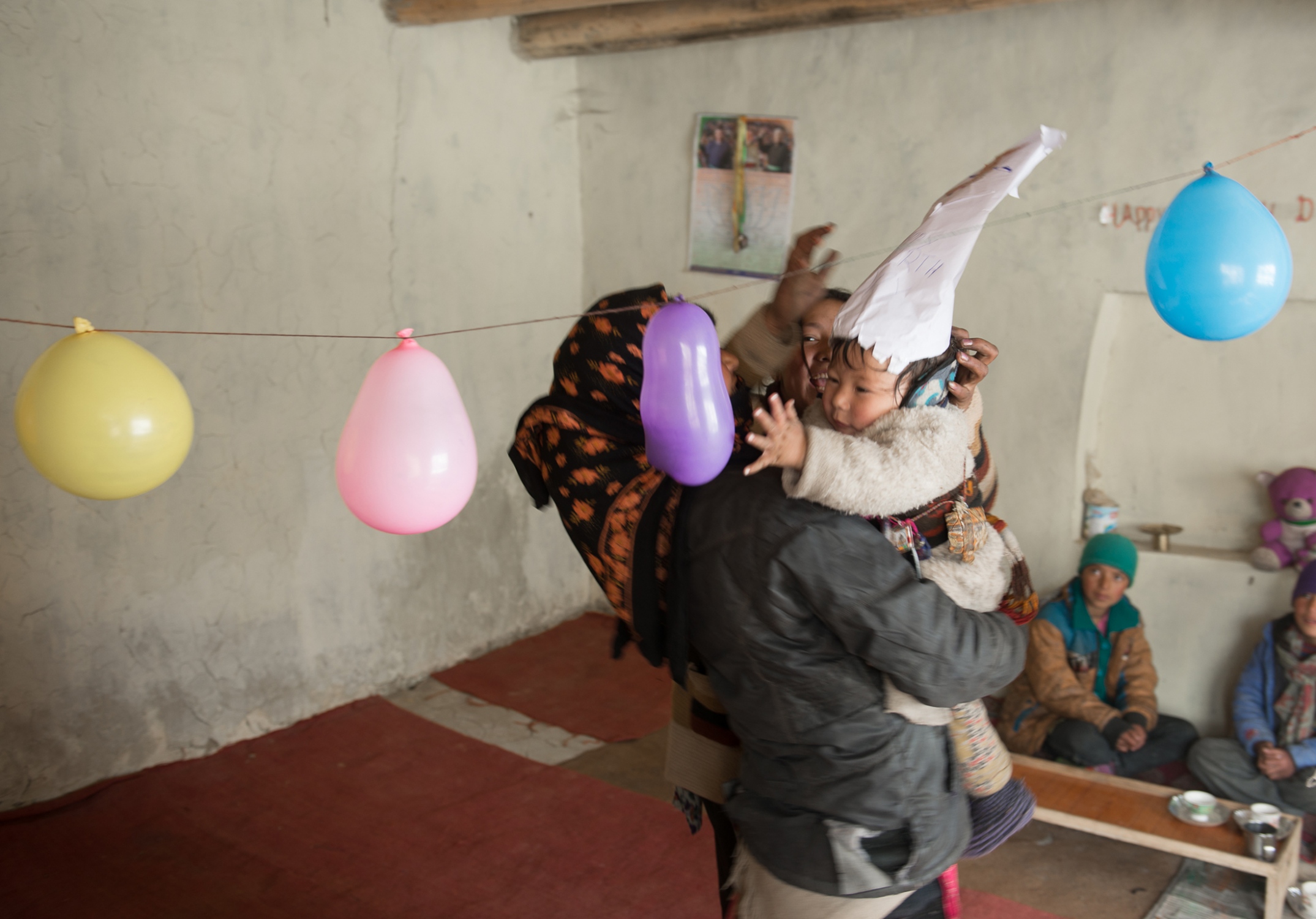
Children from the village of Kumik in Zanskar, Kashmir, gather at the home of...
READ ON
Children from the village of Kumik in Zanskar, Kashmir, gather at the home of Tenzing Minguir to celebrate his first birthday. People in Kumik are Gelugpa Tibetan Buddhists of Tibetan-Mon ethnic origin. People of Zanskar have remained isolated from the world for centuries, living in an autarky. Over the centuries Zanskar has had zero population growth due to the traditional practice of polyandrous marriage, where women take in multiple men as partners. However, the practice has died in the last few decades due to the influence of globalization.
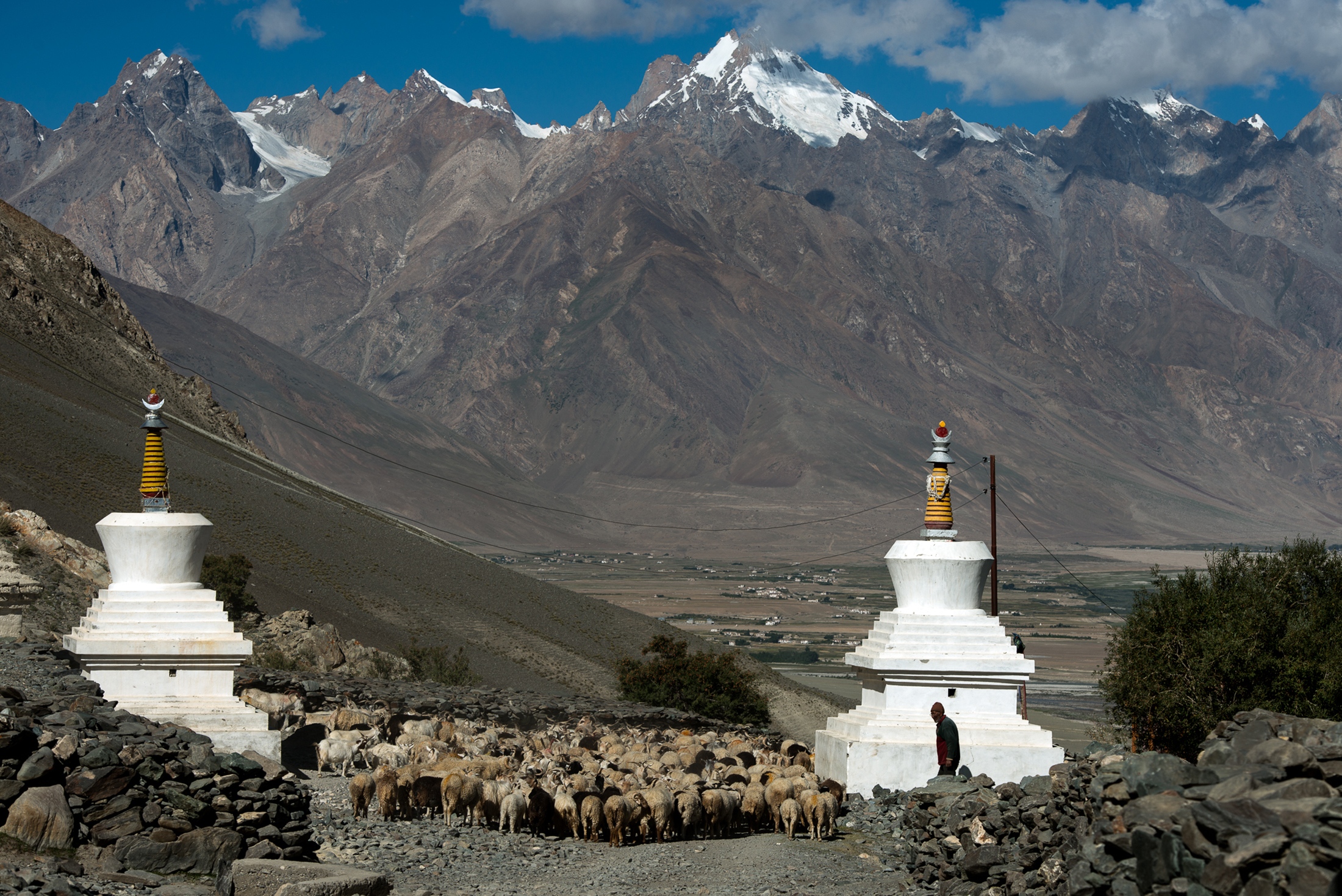
Sonam Tantar herds sheep from all the households in the village of Kumik in...
READ ON
Sonam Tantar herds sheep from all the households in the village of Kumik in Zanskar, Kashmir. Each day, one family from the village is responsible for herding all the sheep from the village to the pastures nearby for grazing. Although families have their own homes and fields, various farming tasks and animal husbandry are accomplished through complex labor and resource-sharing methods. Due to a short growing season, these methods have been developed over centuries to counter resource and time scarcity.
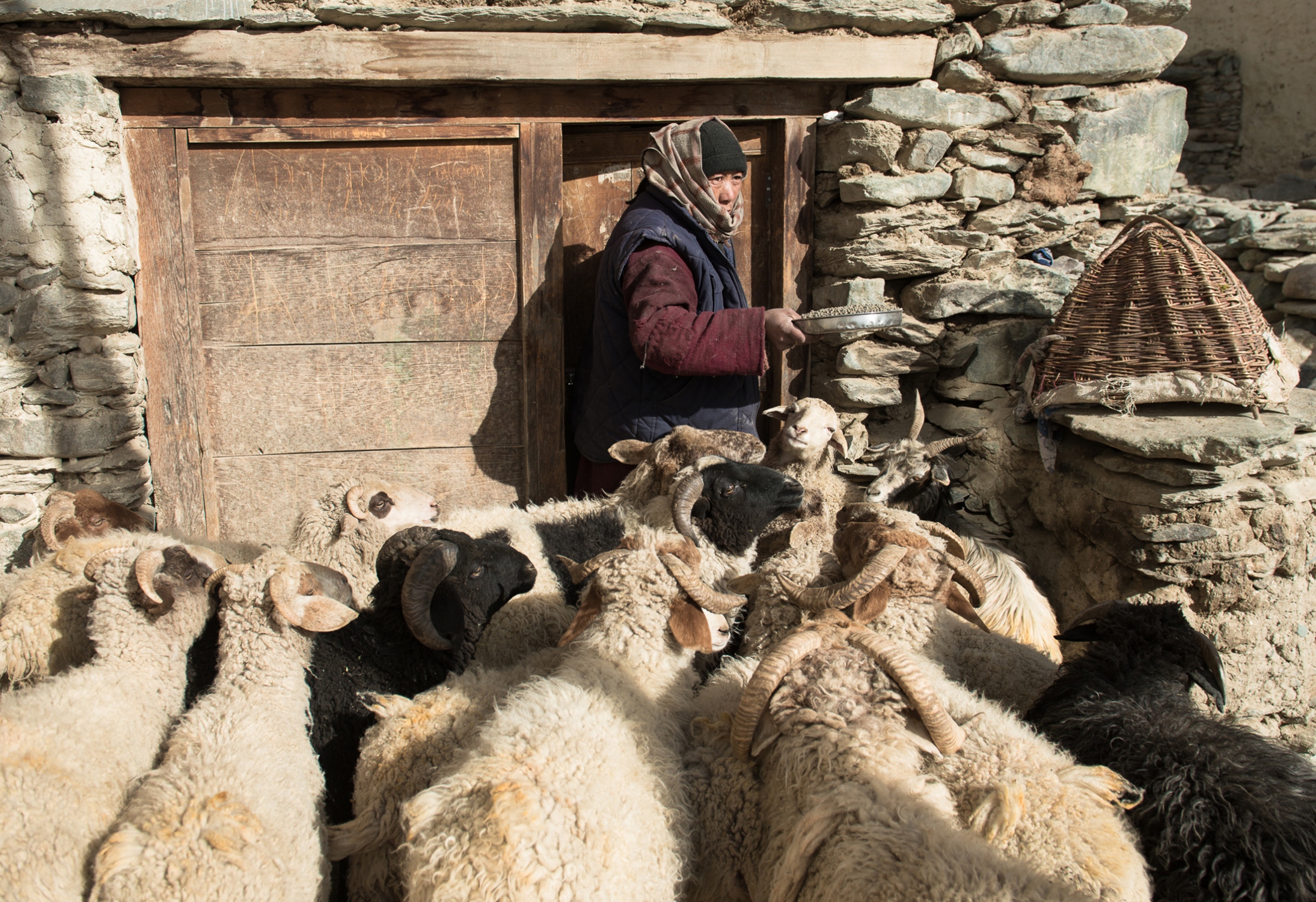
Sonam Chasdon walks out with a plate full of dried peas to feed her livestock...
READ ON
Sonam Chasdon walks out with a plate full of dried peas to feed her livestock at her home in Kumik, in Zanskar, Kashmir. In the winter of 2016, snowfall was so scarce in the region that cattle in the village mostly fed off crop residue on the farmland on warm days.
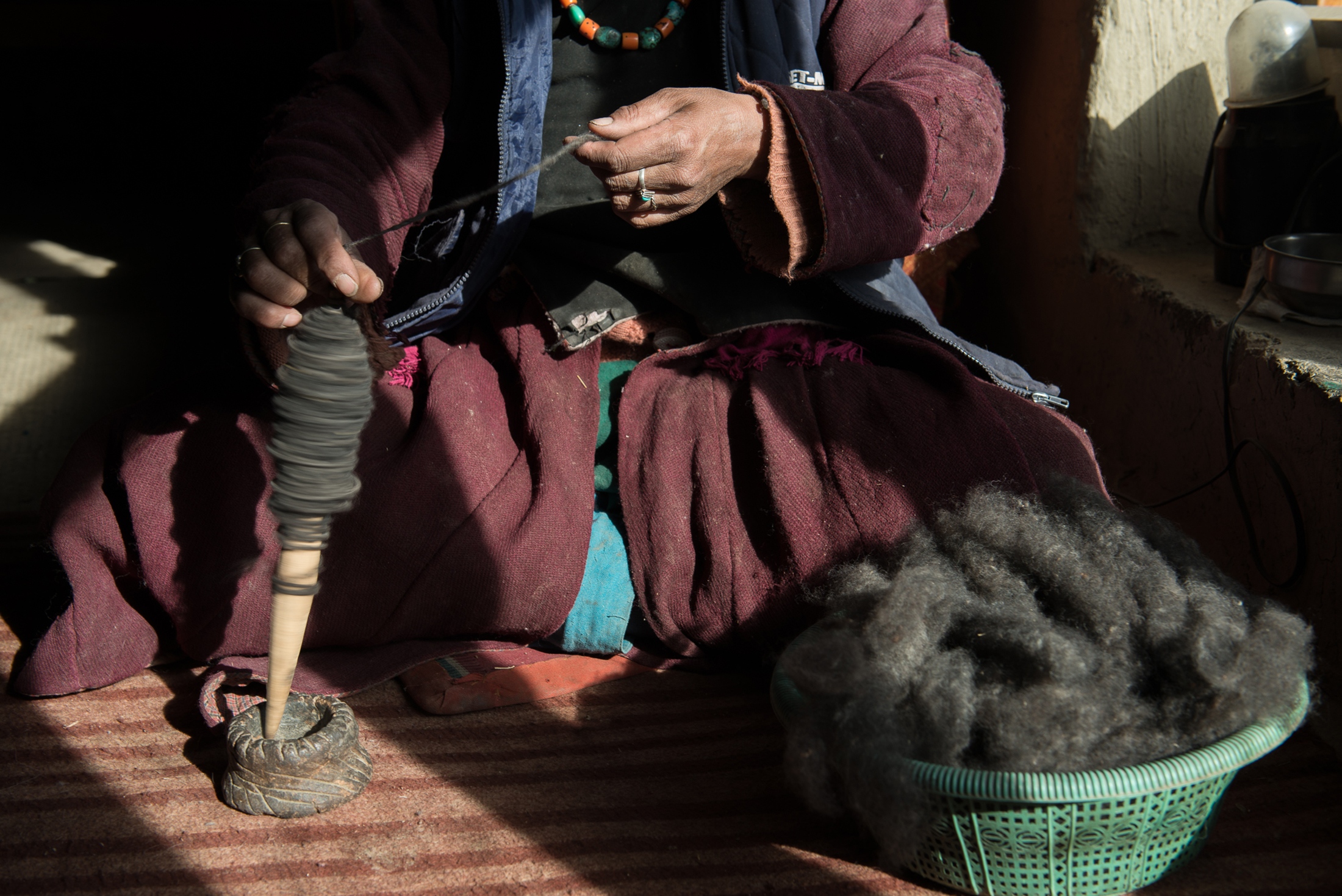
On an unusually warm winter day in January, Sonam Chasdon, sitting on the...
READ ON
On an unusually warm winter day in January, Sonam Chasdon, sitting on the rooftop of her home in Kumik, Zanskar, Kashmir, hand-cards wool.
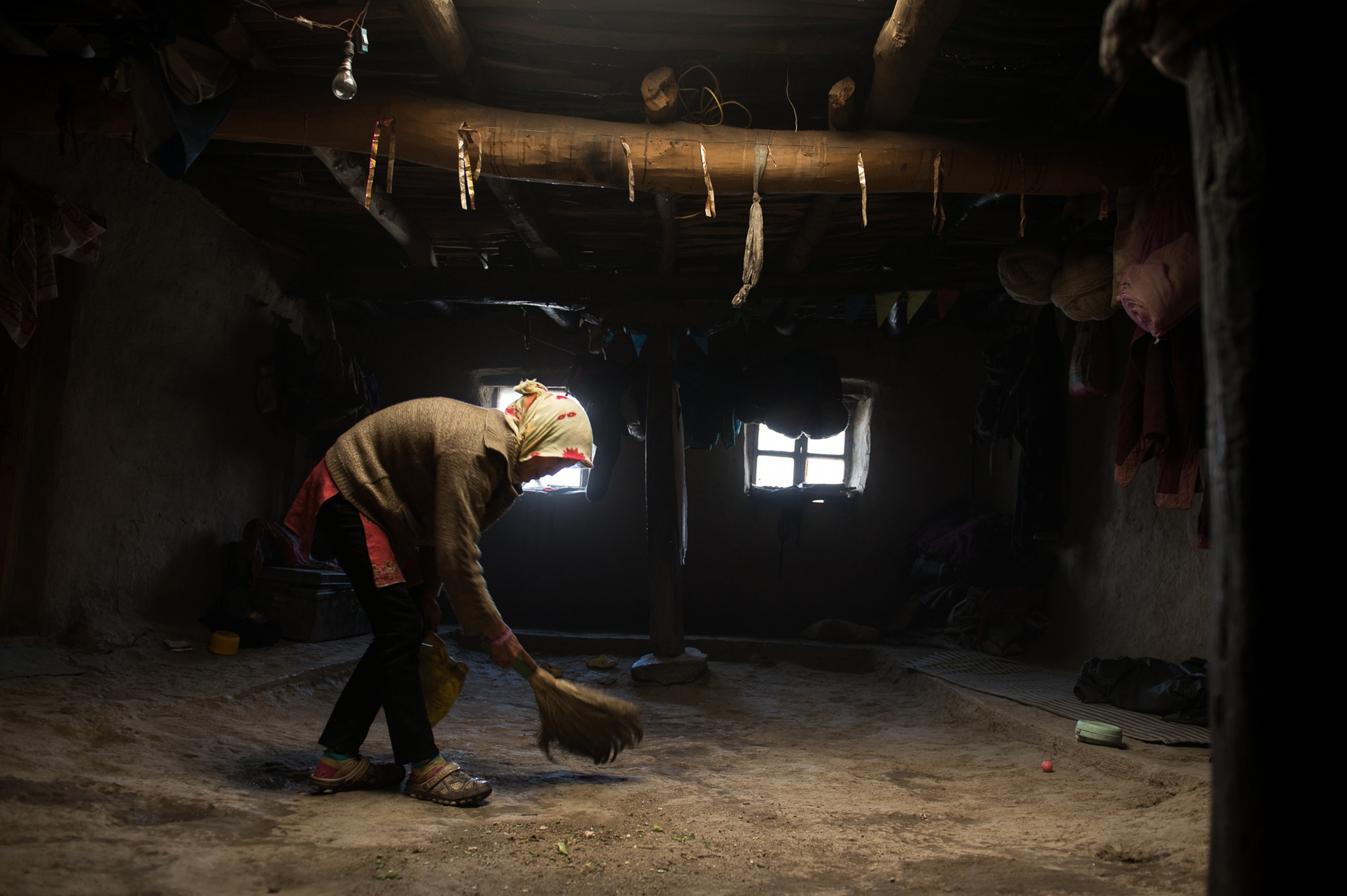
Stanzin Dayskon sweeps the kitchen floor in her parent’s home in the...
READ ON
Stanzin Dayskon sweeps the kitchen floor in her parent’s home in the village of Kumik in Zanskar, Kashmir. Many homes in the village, including Dayskon’s, have adopted natural gas stoves for cooking. However, as temperatures get cooler, most households use traditional dung-fired stoves (Chullas). Chullas are used both for cooking and warming homes. However, black carbon released from Chullas poses health risks and accelerates the melting of glaciers. Soot from dung stoves results in millions of premature deaths annually around the world.
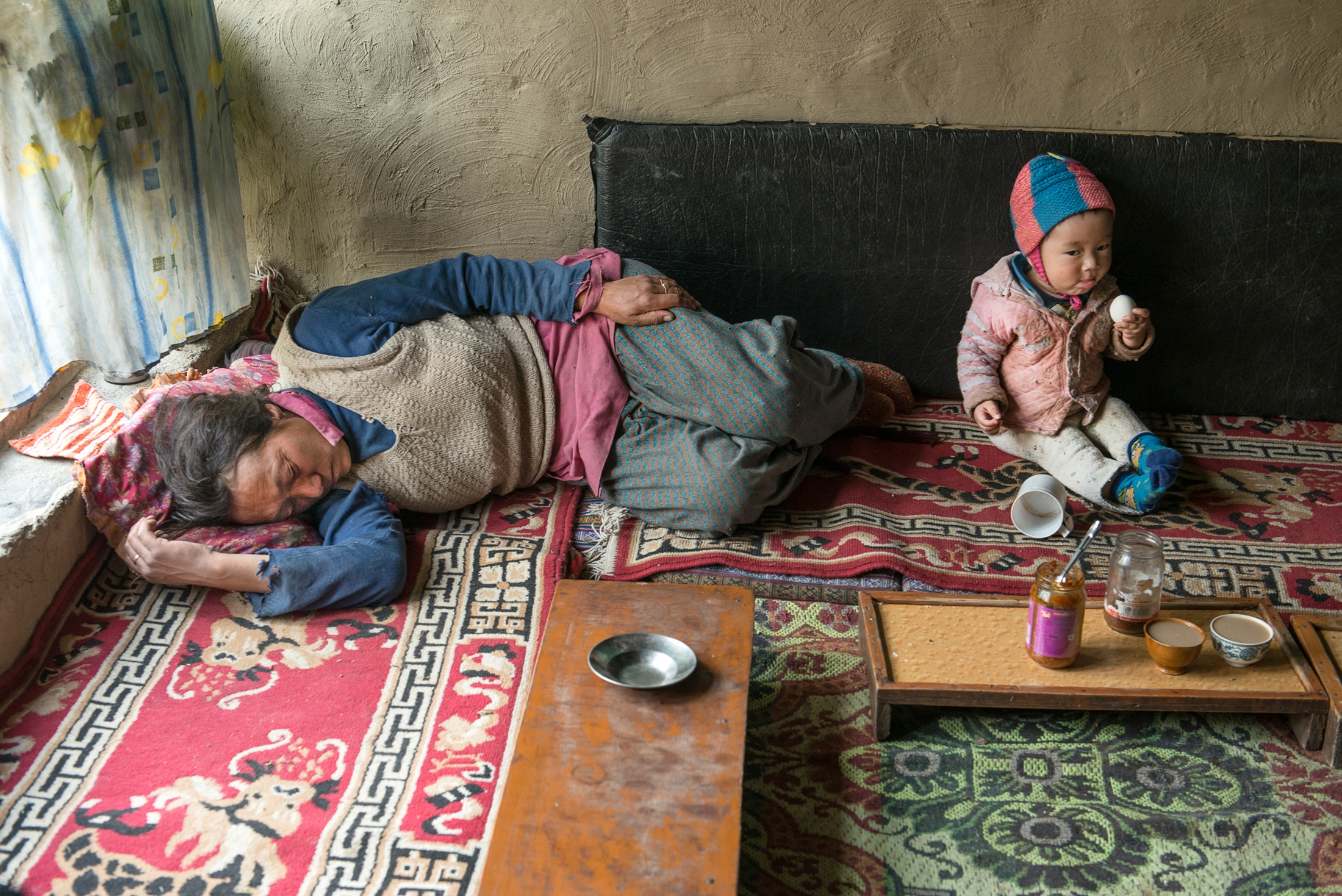
During harvest season, Soman Chasdon takes a power nap in their home in Kumik...
READ ON
During harvest season, Soman Chasdon takes a power nap in their home in Kumik while Chasdons’ grandson Stanzon Stobgaoi plays alone. The family has to sometimes hire Nepalese migrant workers to help with farm chores because there aren’t enough people in the household to help. Two of Chasdon's older sons have left the village to pursue a college education, while her youngest son is a lama at the Stongde monastery. Chasdon and her three daughters now bear the responsibility to farm and raise the livestock.
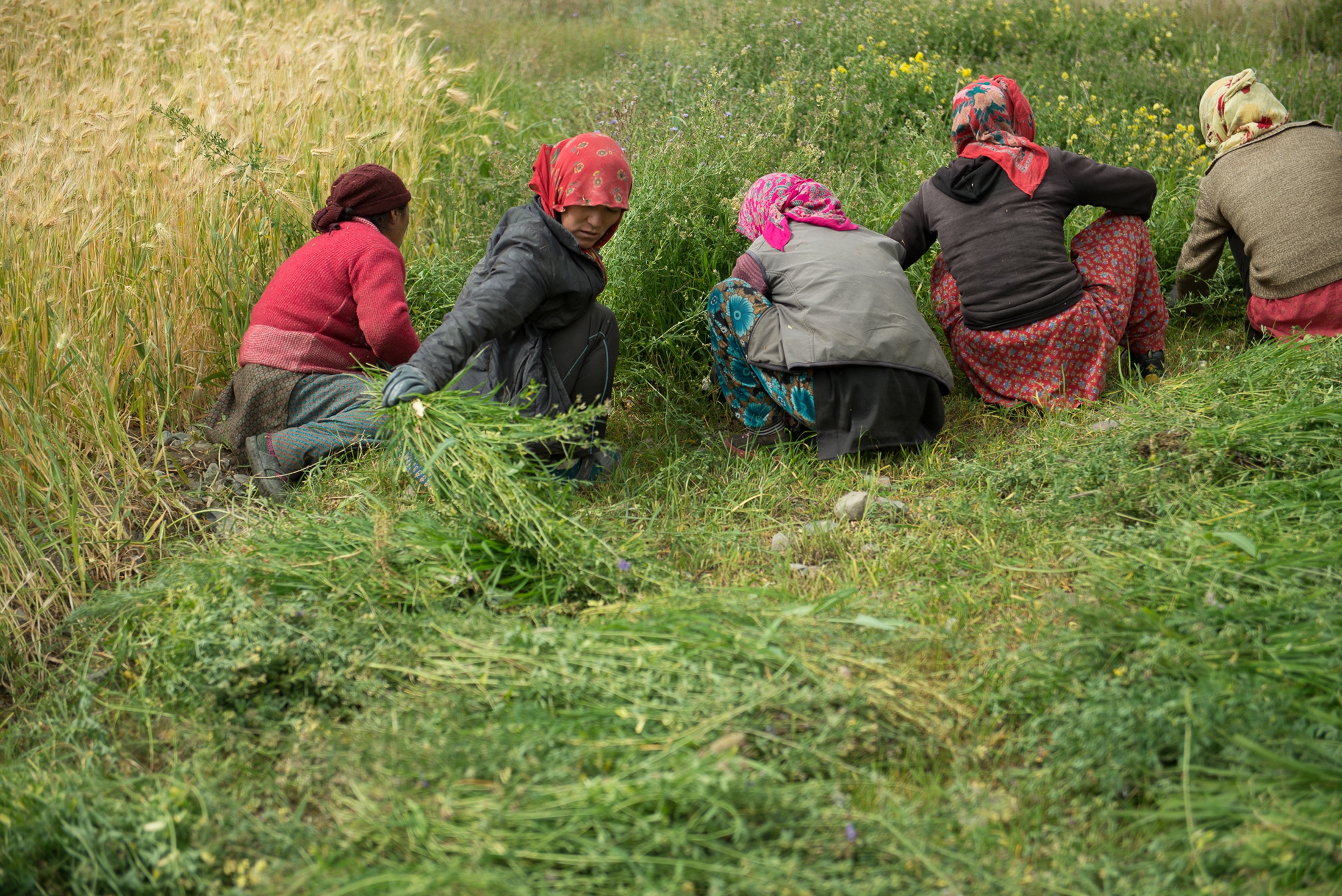
Thinley Choton winnows peas at her family farm in the village of Kumik, in...
READ ON
Thinley Choton winnows peas at her family farm in the village of Kumik, in Zanskar, Kashmir. Winnowing is a manual and labor-intensive technique that uses air current to separate the chaff and the grain. With dwindling manpower in the village, many families are abandoning traditional farming methods. It is becoming increasingly common for villagers to rent machines to process their grain. Warmer temperatures are causing pest infestation, resulting in pesticide use.
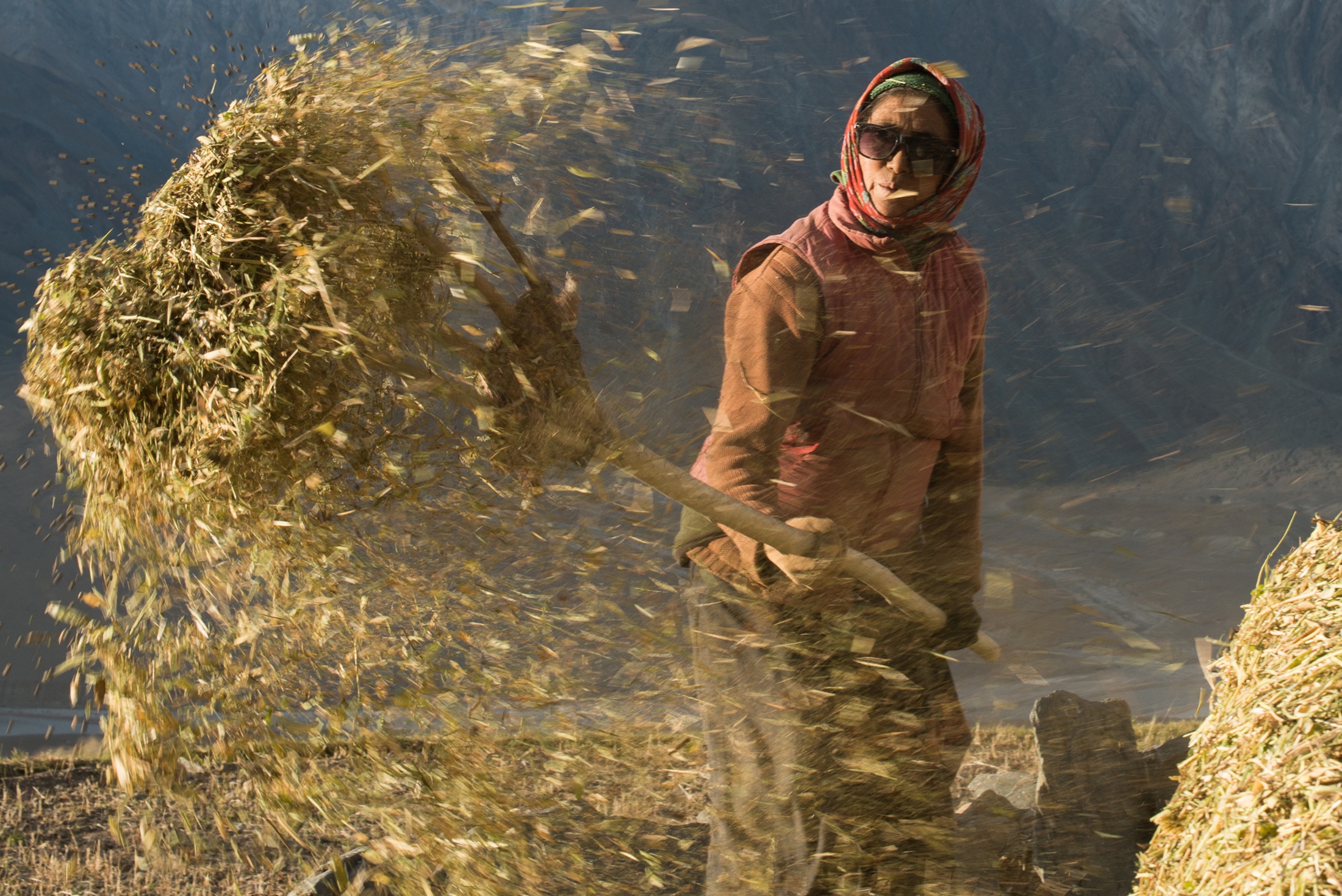
Thinley Choton winnows peas at her family farm in the village of Kumik, in...
READ ON
Thinley Choton winnows peas at her family farm in the village of Kumik, in Zanskar, Kashmir. Winnowing is a manual and labor-intensive technique that uses air current to separate the chaff and the grain. With dwindling manpower in the village, many families are abandoning traditional farming methods. It is becoming increasingly common for villagers to rent machines to process their grain. Warmer temperatures are causing pest infestation, resulting in pesticide use.
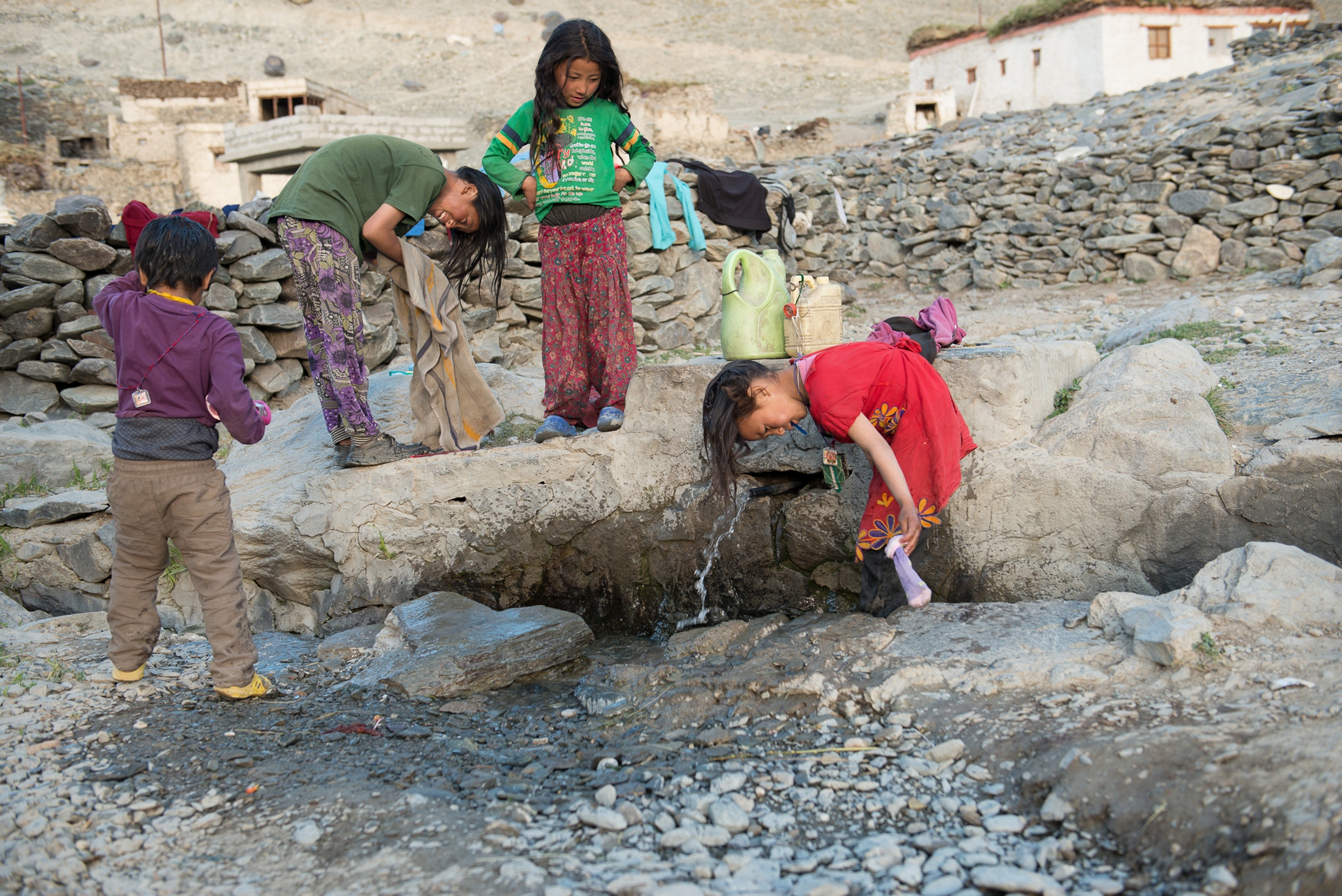
Stanzin Dasal (from left), Tenzing Chozin, Stanzin Angmo, and Sonam Dolma...
READ ON
Stanzin Dasal (from left), Tenzing Chozin, Stanzin Angmo, and Sonam Dolma (right) shower in the trickle of Kumikthu stream, in the village of Kumik, in Zanskar, Kashmir. During warmer months, the Sultan Largo Glacier and the surrounding snowfields that provide water to the village recede, causing water scarcity. A household in Kumik is compelled to use approximately 10-15 gallons of water a day (indoors) compared to 400 gallons of water used daily in an American household of the same size.
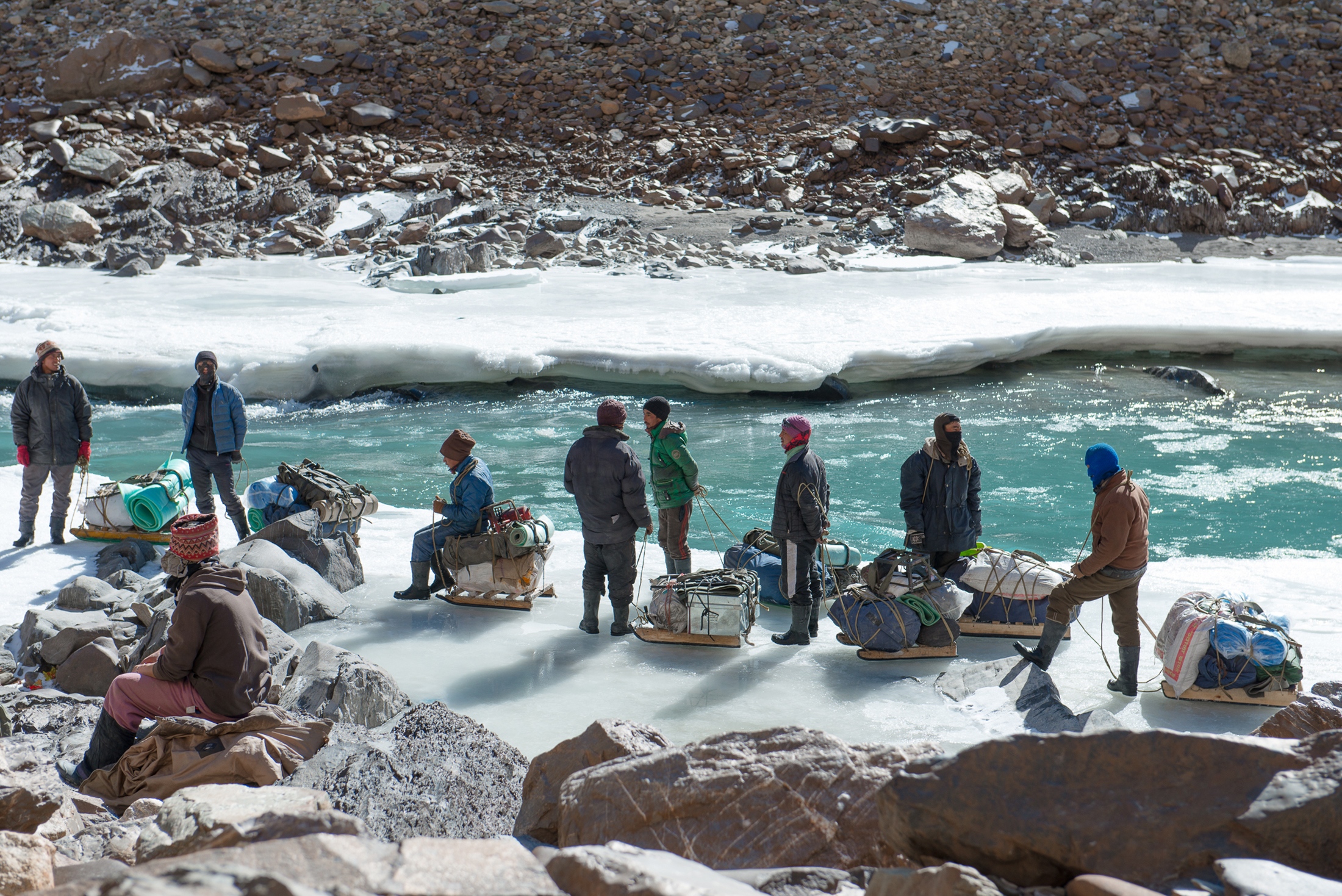
Zanskari men take a break during their journey on the frozen Zanskar River...
READ ON
Zanskari men take a break during their journey on the frozen Zanskar River near the village of Nerak, in Zanskar Kashmir. The Zanskar region, formerly a part of western Tibet, is a remote mountainous area in Kashmir that remains isolated from the world except in summer. The only winter ‘“road” out of the valley is the frozen Zanskar River. Villagers must trek over 100 km on the frozen Zanskar, in sub-zero temperatures and at an altitude of 12,000 feet, to access medical attention or trade.

Snow leopard paw prints appear to traverse the trail taken by Zanskari men on...
READ ON
Snow leopard paw prints appear to traverse the trail taken by Zanskari men on the frozen Zanskar River during winter. Climate change is likely to cause tree lines to shift and force farmers to graze livestock at higher altitudes, altering the habitat of snow leopards and increasing their conflict with humans. Global warming is changing the Himalayas faster than any other region of the world outside the polar caps.
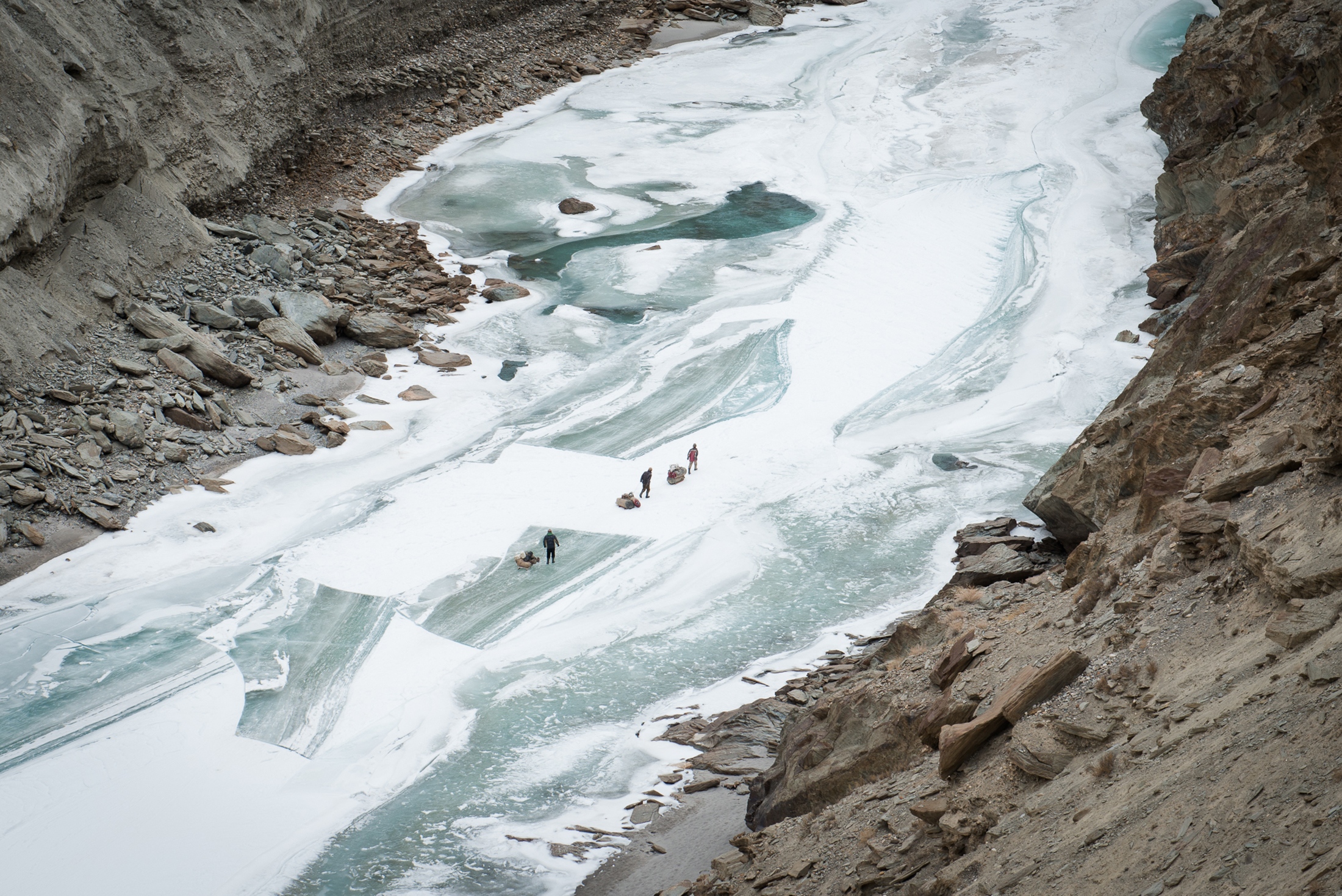
Men walk on the frozen Zanskar River near the village of Chilling in Zanskar,...
READ ON
Men walk on the frozen Zanskar River near the village of Chilling in Zanskar, Kashmir. For centuries, the people of Zanskar have left the region for business via a 100-km frozen Zanskar river trail. The trail is a part of the ancient Silk Route and is called the Chadar, which means “veil of ice.” Climate change results in warmer winter temperatures, which prevent the river from freezing completely, making this journey treacherous and life-threatening.



















